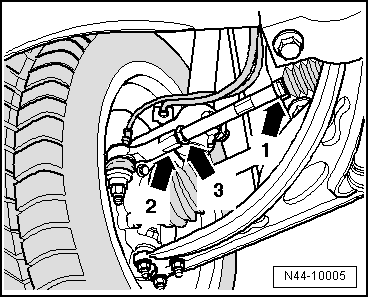
Note | If boot is defective, moisture and dirt will enter steering box. There must be a perceptible layer of lubricant on the cogged area of the steering rack. If there is no layer of lubrication, replace the steering box. The steering box must also be replaced if the steering rack is damaged or worn. |
| –
| Turn steering wheel to straight-ahead position. |
| –
| Clean the power steering casing outside around the dust guards. |
| No dirt must be allowed to enter the steering box through a defective rubber boot during this operation. |
|
|
|
 Note
Note
 Note
Note